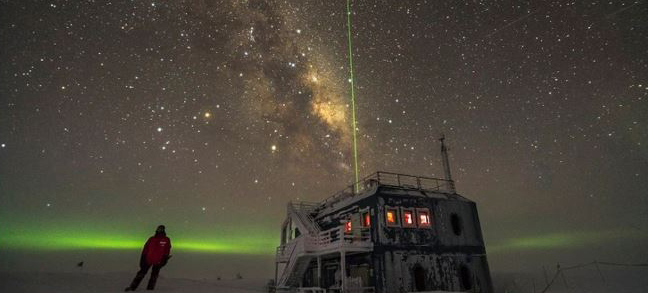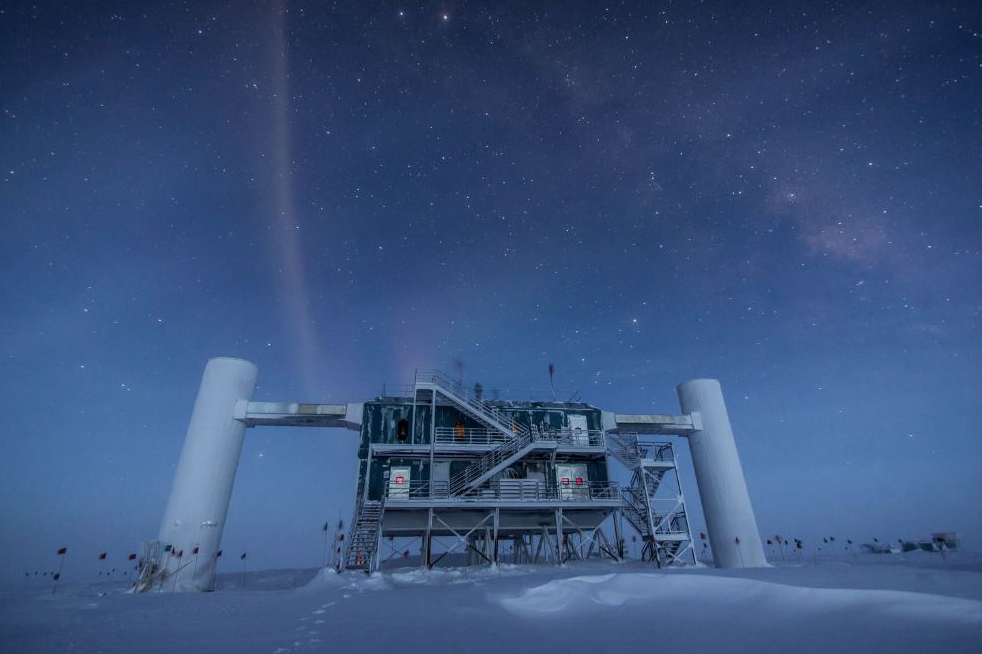When the sun was young and faint and the Earth was barely formed, a gigantic black hole in a distant, brilliant galaxy spat out a powerful jet of radiation.
That jet contained neutrinos – subatomic particles so tiny and difficult to detect they are nicknamed “ghost particles.”
Four billion years later, at Earth’s South Pole, 5,160 sensors buried more than a mile beneath the ice detected a single ghostly neutrino as it interacted with an atom.
Scientists then traced the particle back to the galaxy that created it.
The cosmic achievement, reported Thursday by a team of more than 1,000 researchers in the journal Science, is the first time scientists have detected a high-energy neutrino and been able to pinpoint where it came from.
It heralds the arrival of a new era of astronomy in which researchers can learn about the universe using neutrinos as well as ordinary light.
This is physics at its most mind-boggling and extreme. Researchers compared the breakthrough to the 2017 detection of ripples in space time caused by colliding dead stars, which added gravitational waves to scientists’ toolbox for observing the cosmos.
Neutrinos are so small that they seldom bump into atoms so humans can’t feel them. They don’t shed light, so our eyes can’t see them. Yet these qualities make them invaluable for conveying information across time and space, scientists say. Light can be blocked and gravitational waves can be bent, but neutrinos are unscathed as they travel from the most violent events in the universe into a detector at the bottom of the Earth.
Scientists call the kinds of signals they can detect through space, like radio waves or gravitational waves or now neutrinos, “messengers.” If you’re trying to understand complex and chaotic phenomena happening billions of light-years away, it’s helpful to have a messenger like a neutrino: one that doesn’t get lost.
Neutrinos arrive on Earth at varying energy levels, which are signatures of the processes that created them. By pairing neutrino detections with light observations, scientists will be able to answer questions about distant cataclysms, test theories about the composition of the universe, and refine their understanding of the fundamental rules of physics.
Send questions/comments to the editors.




Success. Please wait for the page to reload. If the page does not reload within 5 seconds, please refresh the page.
Enter your email and password to access comments.
Hi, to comment on stories you must . This profile is in addition to your subscription and website login.
Already have a commenting profile? .
Invalid username/password.
Please check your email to confirm and complete your registration.
Only subscribers are eligible to post comments. Please subscribe or login first for digital access. Here’s why.
Use the form below to reset your password. When you've submitted your account email, we will send an email with a reset code.